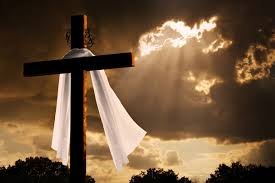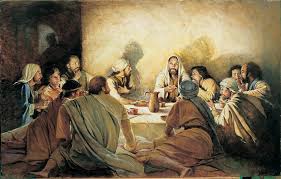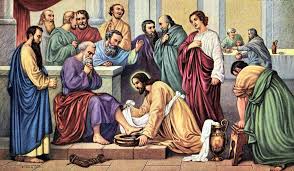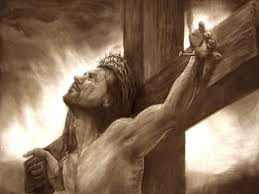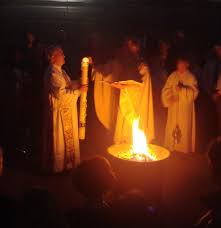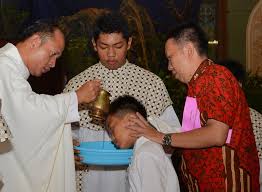Holy Week, A week said to be the holiest and most important in the life of the Church, Where we recount with Sorrow the Events leading up to the Crucifixtion of Christ, our Lord.
It’s the week between Palm sunday and Easter, observed with special solemnity as a time of devotion to the Passion of Jesus Christ. In the Greek and Roman liturgical books, it is called the Great Week because great deeds were done by God during this week. The name Holy Week was used in the 4th century by St. Athanasius, bishop of Alexandria, and St. Epiphanius of Constantia. Originally, only Good Friday and Holy Saturday were observed as holy days. Later, Wednesday was added as the day on which Judas plotted to betray Jesus, and by the beginning of the 3rd century the other days of the week had been added. The pre-Nicene church concentrated its attention on the celebration of one great feast, the Christian Passover, on the night between Saturday and Easter Sunday morning. By the later 4th century the practice had begun of separating the various events and commemorating them on the days of the week on which they occurred: Judas’s betrayal and the institution of the Eucharist on Maundy Thursday; the Passion and death of Christ on Good Friday; his burial on Saturday; and his Resurrection on Easter Sunday.
In most churches, the decorations are red to symbolize the blood of martyrdom, All Images and statues are removed from the Fifth Sunday of Lent, veiling anything that can’t be removed in black or purple. Holy water is also removed from the fonts in churches on Good Friday and Holy Saturday in preparation for the blessing of the water at the Easter Vigil. This removal also corresponds to those days on which the Eucharist is not celebrated.
PALM SUNDAY
COLOUR OF VESTMENT – RED
The Holy week begins with the Palm Sunday on 14th April, 2019 as we mark the triumphant entry of Jesus into Jerusalem!
The liturgy begins with a blessing and procession of palms, but prime attention is given to a lengthy reading of the Passion, with parts taken by the priest, lectors, and congregation. The palms are often taken home by the members of the congregation to serve as sacramentals (sacred signs of the sacraments), and some of them are burned the following year to serve as the ashes for Ash Wednesday.
Jesus’ triumphant return to Jerusalem is only one side of the story. By now many of the Jews are filled with hate for Our Lord. They want to see him stoned, calling Him a blasphemer, especially after offering proof of His Divinity during a winter visit to Jerusalem for the Feast of the Dedication.
The Gospels tell us that Jesus rode into the city on a donkey, enacting the prophecy of Zechariah 9:9, and in so doing emphasized the humility that was to characterize the Kingdom he proclaimed. The irony of his acceptance as the new Davidic King (Mark 11:10) by the crowds who would only five days later cry for his execution should be a sobering reminder of the human tendency to want God on our own terms.
COLOUR OF VESTMENT – PURPLE
Holy Monday is the second day of the holy week and a day after Palm Sunday.
On this day, The Gospels tell us of some of the events that actually occurred on the day of the Biblical Holy Monday. Some of the most notable and recognizable of these were the cursing of the fig tree (Matthew 21:18-22, Mark 11:20-26), the questioning of Jesus’ authority (Matthew 21:23-27), the Cleansing of the Temple and some diverse parables, depending on which Gospel is read.
HOLY TUESDAY
The Third day of the Holy week is Holy Tuesday.
“Blind guides!…For you are like whitewashed tombs—beautiful on the outside but filled on the inside with dead people’s bones and all sorts of impurity. Outwardly you look like righteous people, but inwardly your hearts are filled with hypocrisy and lawlessness…Snakes! Sons of vipers! How will you escape the judgment of hell?” (Matthew 23:24-33)
HOLY WEDNESDAY (SPY WEDNESDAY)
HOLY THURSDAY(MAUNDY THURSDAY)
“I have been very eager to eat this Passover meal with you before my suffering begins. For I tell you now that I won’t eat this meal again until its meaning is fulfilled in the Kingdom of God.” (Luke 22:15-16, NLT)
After, the homily, the feet of twelve persons already chosen are washed by the priest to commemorate Jesus display of Humility and servanthood.

The 7th day of the Holy Week, also known as Holy and Great Saturday, the Great Sabbath, Black Saturday, Joyous Saturday, or Easter Eve, and called “the Saturday of Light” among Coptic Christians, is the day after Good Friday. It is the day before Easter and the last day of Holy Week in which Christians prepare for Easter. It commemorates the day that Jesus‘ body lay in the tomb and the Harrowing of Hell.
Although celebrated Holy Saturday evening, it is the dramatic Easter vigil liturgy that marks the beginning of Easter. We are awaiting our master’s return with our lamps full and burning, so that he will find us awake and seat us at his table (cf. Luke 12:35ff). All Catholics should try to attend this beautiful service. The vigil is divided into four parts:
- Service of Light,
- Liturgy of the Word,
- Liturgy of Baptism, and
- Liturgy of the Eucharist.
Christ yesterday and today (vertical arm of the cross)
the Beginning and the End (horizontal arm of the cross)
the Alpha (alpha above the cross)
and the Omega (omega below the cross)
All time belongs to him(numeral 2 in upper left corner of cross)
and all the ages (numeral 1 in upper right corner of cross)
To him be glory and power (numeral 4 in lower left corner)
through every age and for ever. Amen (numeral 0 in lower right corner)Then the priest may insert five grains of incense into the candle in the form of a cross, meanwhile saying:
1. By his holy
2. and glorious wounds,
3. may Christ the Lord
4. guard us
5. and protect us. Amen.
May the light of Christ, rising in glory,
dispel the darkness of our hearts and minds.
- the story of creation, Gen 1:1-2; 2;
- Abraham and Isaac, Gen 22:1-18;
- Crossing of the Red Sea, Exodus 14:15–15:1;
- Isaiah 54:5-14;
- Isaiah 55:1-11;
- Baruch 3:9-15.32–4:4;
- Ezekiel 36:16-17.18-28;
- Romans 6:3-11; and
- Gospel reading Mark 16:1-7.
The Gloria is sung before the reading of the Epistle of the Romans, and the Alleluia is sung before the Gospel.3) Liturgy of Baptism
 During this time the Easter water is blessed, new members are brought into the Church through baptism, those that have been prepared in RCIA and have been going through series of Rites For the past few Sundays in the church. Part of the liturgy includes the Litany of the Saints. There are also those who were baptized, but haven’t received the other sacraments of initiation. The catechumens and these faithful are confirmed and will later receive the Holy Eucharist. Afterwards the faithful are blessed with water and all renew their baptismal promises.4) Liturgy of Eucharist
During this time the Easter water is blessed, new members are brought into the Church through baptism, those that have been prepared in RCIA and have been going through series of Rites For the past few Sundays in the church. Part of the liturgy includes the Litany of the Saints. There are also those who were baptized, but haven’t received the other sacraments of initiation. The catechumens and these faithful are confirmed and will later receive the Holy Eucharist. Afterwards the faithful are blessed with water and all renew their baptismal promises.4) Liturgy of Eucharist So resumes the Mass, with the special prayers inserted during the Eucharist Prayer. The whole church is called to join at the sacrificial table that Christ prepared for us through his death and resurrection. The Mass ends with the gloriousV. The Mass is ended, go in peace, alleluia, alleluia.R. Thanks be to God, alleluia, alleluia.
So resumes the Mass, with the special prayers inserted during the Eucharist Prayer. The whole church is called to join at the sacrificial table that Christ prepared for us through his death and resurrection. The Mass ends with the gloriousV. The Mass is ended, go in peace, alleluia, alleluia.R. Thanks be to God, alleluia, alleluia.
On this Day, when the Gloria is sung , the church bells are rung again, the Altar will be decorated again with flowers and the Easter Season begins…
